
Gardening 101: How to Control Pests in Plants
Published: 14/02/2023 | Updated: 05/05/2023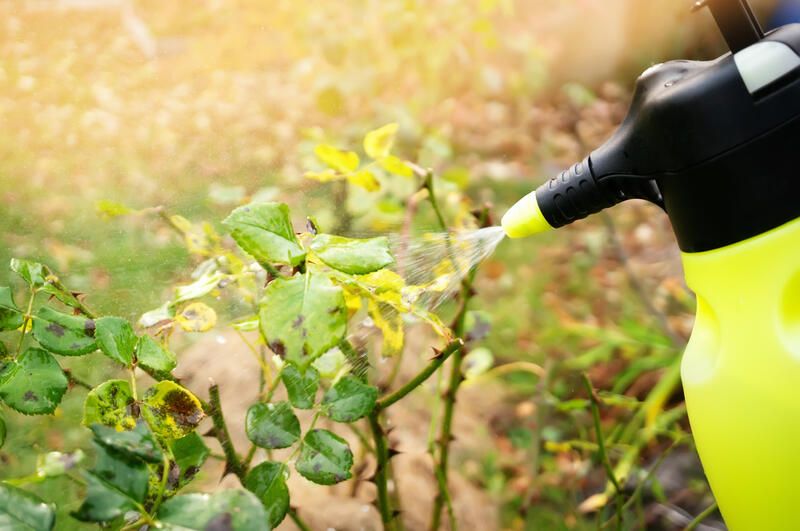
Plants bring such a wonderful essence and soul to any place they're put whether it's indoors or outdoors. They can help you transform your living room into a wonderland or elevate your yard into a serene haven. Plants are such a wonderful addition to any home or garden, but just like everything else, they come with their responsibilities.


From making sure your plants have healthy soil and good sunlight to garden pest control is very important. People often forget the importance of controlling common garden pests and making sure your plants are thriving, healthy, and blooming.
Let's get into some great ways to control garden pests and identify plant diseases your plants might have!
Control Methods
Even if you are willing to apply pesticides, you should still be aware of whether pests are causing damage to your crops, the extent of the damage, and whether any field animals are already managing the pest. Then you may choose whether to use chemicals, when to use them and which ones.
Keeping plants healthy is the greatest approach to managing both pests and illnesses.
-
Build Healthy Soil: Friendly insects may live in healthy soil, which also helps to ward off many plant illnesses.
-
Plant Resistant Varieties: To ensure sure the seeds you choose are resistant to common pests and diseases, ask farmers or extension workers about them.
-
Spacing Plants Correctly: When crops are planted too closely together, less air and sunlight can reach the leaves, which promotes the growth of diseases. However, spacing crops apart makes room for weeds, dries the soil, and could result in a lower yield. Try several spacings to discover which one suits each crop the most.
-
Choosing the Right Planting Time: When it starts to rain or get warm, for example, pests and diseases typically react to the change in the weather. You may choose the optimal time to sow by observing how each crop develops and discussing these patterns with other farmers. Making sure crops are large enough to withstand pests or illnesses that arrive at specific times might be accomplished by planting earlier than usual. The majority of pests and diseases may disappear if crops are planted later due to a shortage of nourishment.
-
Watering: Infectious agents that dwell in the soil can splash onto plants when they are watered from above. Additionally, disease growth favors moist environments like leaves and stems. Plant stems and leaves can be kept healthy by using flood irrigation or drip irrigation.
-
Crop Rotation: Change crop patterns and plant a variety of crops. Large areas with just one type of plant draw bugs attracted to that plant.
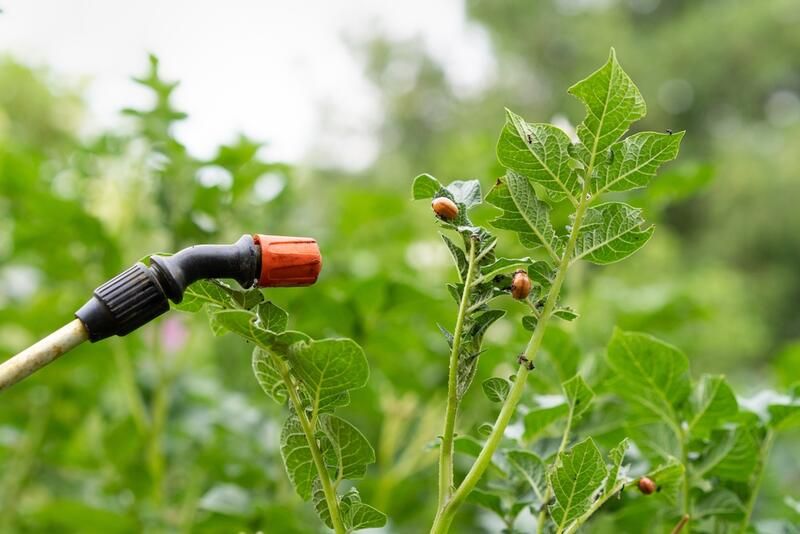
Identifying Diseases & Pests
Looking for Pests
Insects that consume plants are a typical aspect of farming. As long as they coexist in harmony with other insect species, especially those that consume pests, they pose minimal threat to crops.
Check your crops frequently. This will make it clearer to you whether to employ natural pesticides or other pest control techniques and when to let helpful insects do their job. Ask yourself questions like these to help you identify pests and diseases:
-
Are insects consuming bits of the plant?
-
Is the damage rising? Will it have an impact on crop yield?
-
Are beneficial insects controlling pests?
Identifying
Dealing with diseases and pests is a necessary part of the job for any green thumb. Aphids, slugs, or powdery mildew are just a few of the issues that every gardener will eventually have to deal with. Early detection of garden pests is essential for successful pest and disease control. Here are some common garden pests and illnesses to be aware of:
-
Small sap-sucking insects called aphids can seriously harm your plants. Look for them on the undersides of the leaves, and use an insecticide on them.
-
Nothing is more enticing to slugs and snails than a juicy leaf or soft stem. To get rid of them, place commercial slug bait or beer-baited traps outside.
-
A fungal disease called powdery mildew coats plants in a powdery white layer. It can be treated with a fungicide and is particularly prevalent in warm, muggy climates.
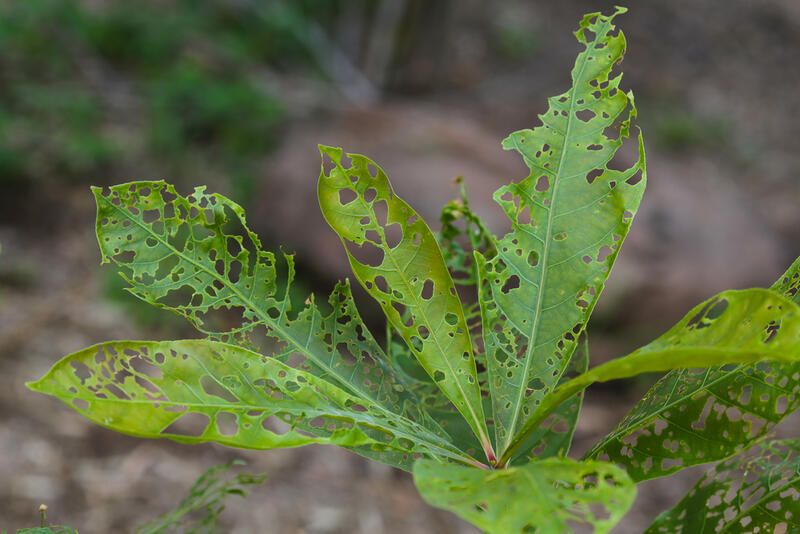
Natural Pest Control
These organic pesticides that are completely DIY work well to get rid of pesky pests from your crops while also being secure enough to utilize around you and your loved ones.
Having a vegetable garden at home is the best way to start understanding the struggles faced by the farmers who produce our food. It may be quite difficult to grow food in a home garden because of the weather, weeds, insects, and soil fertility issues. This is especially true when using organic methods that don't rely on quick fixes that could be harmful, such as herbicides, insecticides, and conventional fertilizers.
Here are some of our favorite natural pest control methods:
Vegetable Oil
A natural pesticide produced from vegetable oil and mild soap (like Castile or liquid dish soap) can be incredibly effective against pesky insects like aphids, mites, thrips, and other pests.
When ready to use, combine two teaspoons of the oil spray mixture with one quart of water, shake vigorously, and spray directly onto the surfaces of the plants that are being attacked by the tiny pests. To make a basic oil spray insecticide, combine one cup of vegetable oil with one tablespoon of soap (cover and shake thoroughly).
The insects are effectively suffocated by the oil because it coats their bodies and closes the pores that allow them to breathe.
Soap Spray
A soap spray, which is efficient for preventing mites, aphids, whiteflies, beetles, and other hungry small insects, is a homemade pesticide that is quite similar to the oil spray.
Mix one and a half tablespoons of mild liquid soap (such as castile soap) with one quart of water to generate a basic soap spray insecticide. Spray the resulting solution directly on the diseased plant surfaces.
Similar to how an oil spray pesticide functions, a soap spray insecticide can be used as needed (though it is always recommended to NOT apply it during the hot sunny part of the day, but rather in the evenings or early mornings).
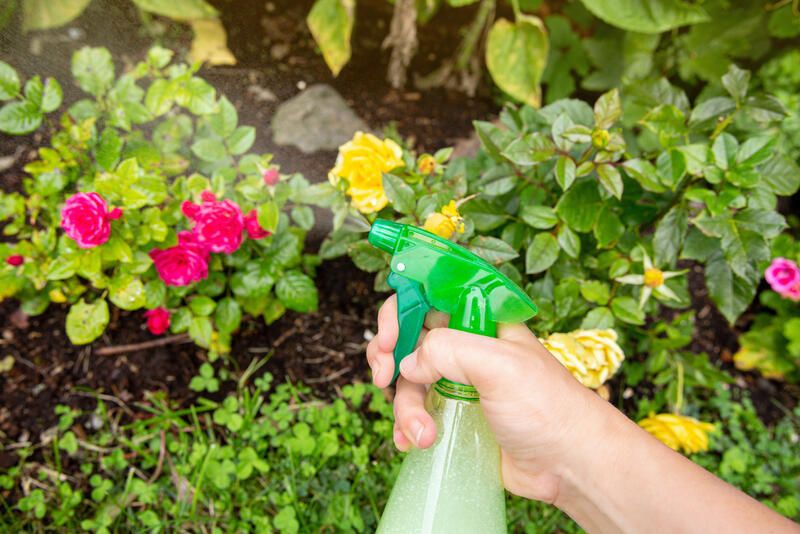
Tomato Leaf Spray
As members of the nightshade family, tomato plants have alkaloids like the appropriately named "tomatine" that are capable of controlling aphids and other insects. To produce tomato leaf spray, chop two cups of fresh tomato leaves (which can be picked from the plant's base) into one quart of water, and let steep for an overnight period. Spray the foliage with the plant material after straining it out.
Garlic Spray
Its strong smell plays a role when garlic is employed as a natural pesticide. Garlic is well recognized for its strong odor, which some find tasty, and others find repulsive. It's not entirely obvious if the garlic and Chile sprays are insecticides or are more likely insect repellents, but in any case, you can use these typical cooking components to reduce or even eliminate insect infestations in the garden.
Take two complete bulbs of garlic (not just two cloves) and purée them with a little bit of water to create a simple garlic spray. After letting the mixture sit for the night, filter it into a quart jar and fill it with water, 1/2 cup of optional oil, and 1 teaspoon of mild liquid detergent. Apply copious amounts of this DIY insecticide to affected plants by combining one cup of the mixture with one quart of water.
Neem Oil Spray
An excellent resource for organic gardeners, neem oil is made from the seeds of the neem tree and is a potent natural pesticide that can disrupt the life cycles of insects at all stages (adult, larvae, and egg).
Insects that consume leaves and other plant parts are "antifed" by neem oil, which disrupts their hormones. Neem oil is a natural fungicide that is excellent against powdery mildew and other plant fungal illnesses, is biodegradable, nontoxic to pets, birds, fish, and other wildlife, and is effective against a range of common garden bug pests.
Many garden centers and natural food markets carry it.
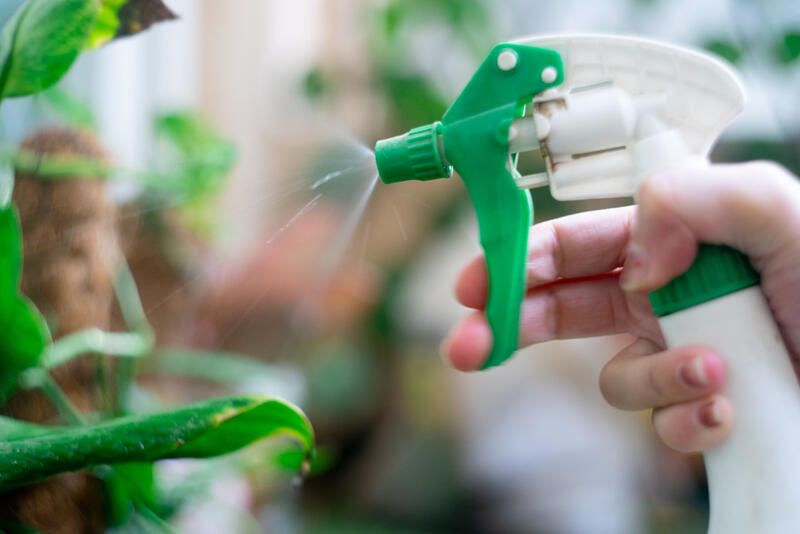
Diatomaceous Earth
Diatomaceous earth is a naturally occurring mineral with a somewhat verbose name that is made from a sedimentary rock that was formed by fossilized algae (diatoms) and is a fairly abundant resource (it is estimated that diatomaceous earth accounts for 26% of the earth's crust by weight). 4
A natural pesticide is only one of the many uses for diatomaceous earth in and around the home. This substance kills insects by dehydrating them rather than poisoning or suffocating them. It does this by its abrasive properties and its affinity for absorbing the lipids (a waxy substance) from the insects' exoskeleton.
Most Common Pest Control Methods
Sticky Traps
Fly, earwigs, and other small insects are kept out of your plants using sticky traps. To create a barrier that traps the bug, simply stick one of the Sticky Traps to the wall in front of the plant. The traps are available in a variety of sizes and forms, and they deter a wide range of pests.
Soil Barrier
Many pest insects that attack plants prefer dirt to foliage. Plant devastation can be avoided by covering the soil with a soil barrier. Want something more natural? To deter pests, mix cinnamon into the soil.
Bug Sprays
Online, at different vendors, and in home improvement stores, DIY bug sprays are available for purchase. Options for bug spray include both conventional and natural varieties like those mentioned above. Investigate options to obtain the optimum spray for your garden requirements.
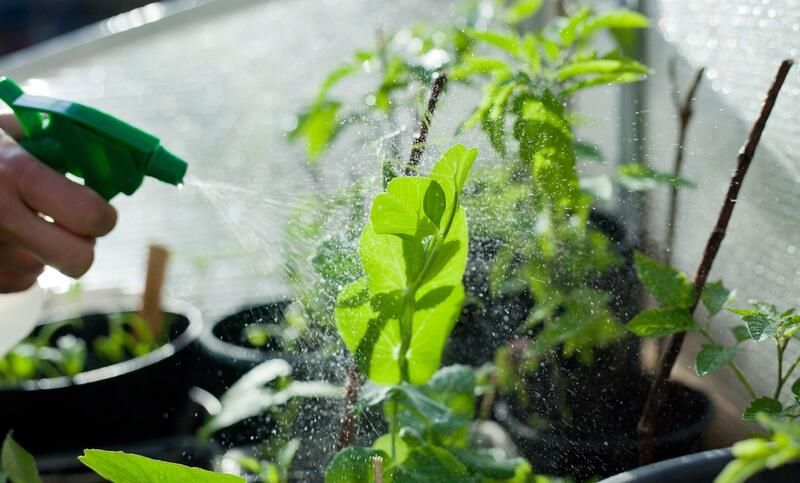
Essential Oils
If you want an all-natural solution to keep pests away from your plants, try using essential oils. There are several popular options for repelling pests from your plants, including lavender, clove, and mint.
Frogs & Ladybugs
Ladybugs and drugs are two of the greatest to add to your indoor plants and garden because they both consume insects, even though many animals do. It is a simple, natural technique to feed an animal and maintain the health of your plants. if you can't keep the bugs off your plants, it's time to consider bringing in a pro to take care of it for you.
Types of Garden Pests
Aphids
What they appear to be: Aphids are tiny, oblong, soft-bodied insects that can be any color—yellow, white, red, or black—and have wings or not. Fruit plants are preferred by a white, cottony aphid kind.
Aphids commonly gather on the sensitive new growth of plants, sucking sap and distorting leaves and blossoms as a result. Although it can be unexpected to see hundreds of them grouped on a plant stem, they rarely cause enough harm to the plant to cause it to die. So, they normally aren't a big worry unless they're hurting a significant agricultural crop. Using a strong spray of your garden hose usually knocks these bad bugs off your plant leaves. Aphids can be controlled by using helpful insects like lacewings and ladybug larvae.
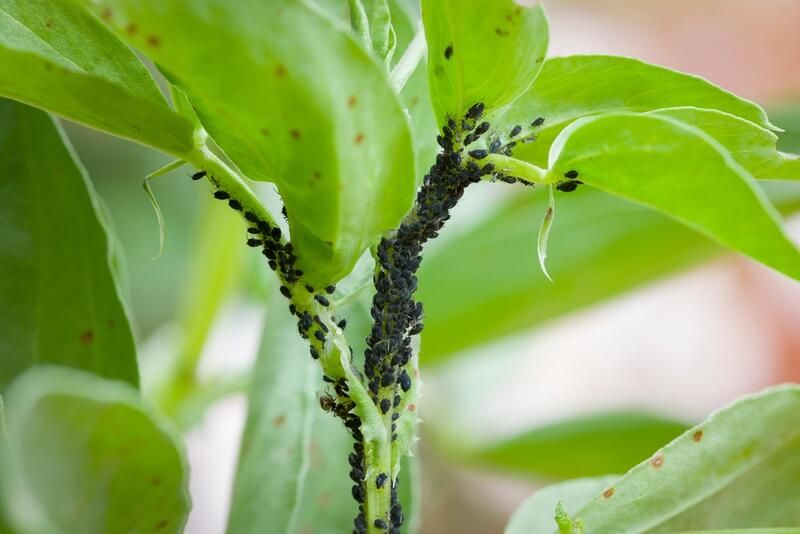
Flea Beetles
They resemble tiny black or grey beetles that are less than 1/8 of an inch long and that, if disturbed, will hop away like a flea or cricket.
Plant damage: Numerous small, ragged holes or pits emerge throughout the leaves, usually in the spring and early summer. Help protect your plants against flea beetles by covering them until they begin to flower.
Mealybugs
What they look like: Mealybugs are tiny, cottony insects that feed on sap.
Mealybugs feed on plant sap, resulting in stunted growth, reduced leaf production, and plant damage. As they consume food, they release honeydew, which can draw ants and promote the spread of sooty mold. You can control mealybugs by planting nectar-producing plants like yarrow and sweet asylum.
Japanese Beetles
Japanese beetles have coppery wings and are either metallic blue or green.
Japanese beetles devour plants with a ferocious appetite. Adult beetles only leave behind the veins of leaves after consuming flowers and foliage. Though Japanese beetles prefer hundreds of plants, they frequently prey on hibiscus and roses. In lawns, Japanese beetle larvae (grubs) can potentially be a nuisance. Before emerging as adult beetles in the spring, they spend the winter under the soil and consume grassroots. When turf grasses are heavily infested, they become weak and vulnerable to weed invasion.
Japanese beetles in the garden should be manually removed each day as soon as they arrive and disposed of in a container filled with soapy water.
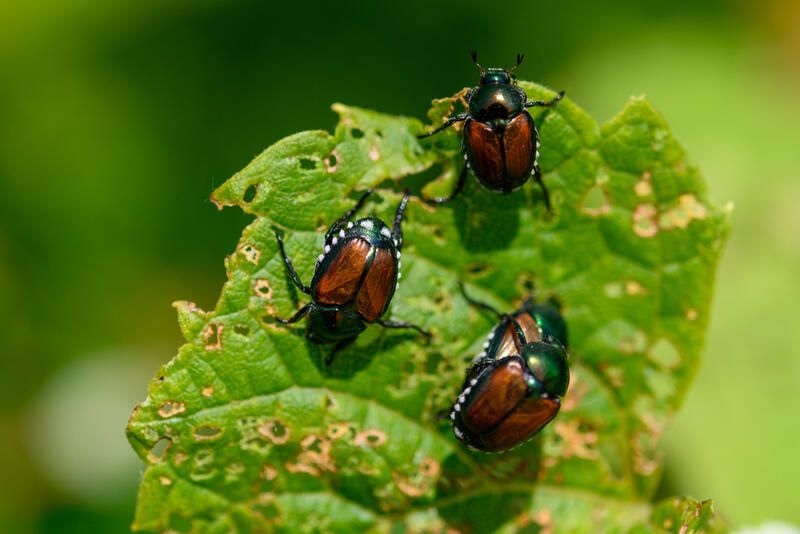
Spider Mites
The most frequent pest of outdoor plants is the spider mite. The plants become lifeless and unhealthy as a result of the mites sucking their juices. Additionally, mites make plants weaker, making it possible for them to succumb to a severe infestation if they are unable to survive.
Spider mites enjoy hot, dusty environments and are typically initially discovered on trees or plants along dusty roads or at the edges of gardens. Additionally, plants under water stress are quite vulnerable. Female mites capture wind currents and spread to neighboring plants as the quality of the foliage on strongly afflicted plants degrades.
The mites themselves have an oval form, are soft bristles, start pale green, and as they become older, develop noticeable dark green markings. The two-spotted spider mite gets its name from these green dots, which are the contents of its intestines.
Scale Insects
Although there are many different types of scale insects, all start as crawlers that move about until they reach a suitable spot for plant feeding. The 1/16-inch-long scale insects settle down, become immovable, and grow hard, oval shells that blend in with bark.
Scale insects rob plants of essential fluids, causing stunted leaves and needles, yellowing, and twig and branch dieback.
Spraying woody plants with dormant oil in the late winter months will smother bugs. Spray plants with neem or other light horticultural oil in the spring and summer.
Beneficial Insects
Attract good bugs for your old and young plants (they have a lot of health benefits)! You might be shocked to learn that just approximately a tenth of the thousands of insects that live in the typical backyard is harmful. In actuality, the majority are either helpful or safe. Three broad categories can be used to group beneficial insects:
We rely on these insects, which include bees, butterflies, flies, and moths, to pollinate the flowers in our yard.
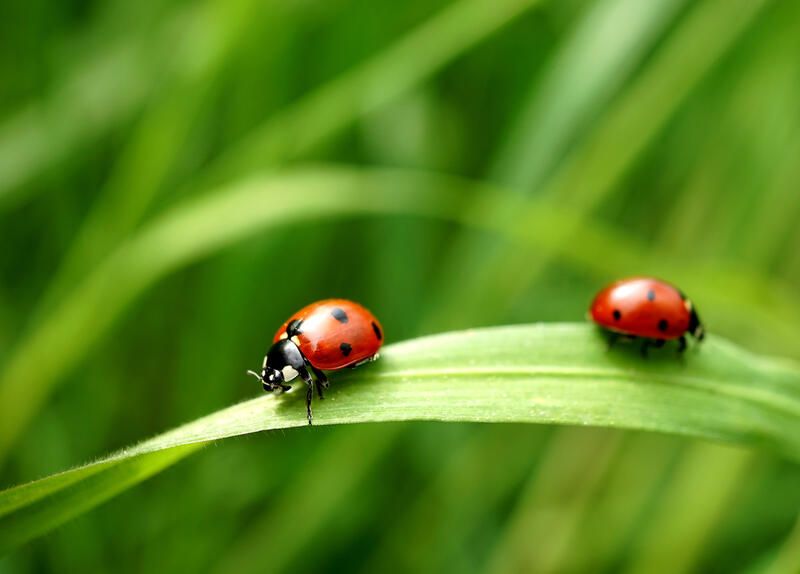
Predators, by consuming pests, these insects get rid of them. This group includes organisms including ladybirds, praying mantids, and green lacewing larvae.
In a slightly different manner than predators, parasitizes also prey on other insects. When the eggs hatch, the larvae feed on the host insects. They lay their eggs on or inside undesirable bugs. The most prevalent member of this group is parasitic wasps.
Here are some great beneficial insects to start attracting to your yard!
-
Parasitic Wasps
-
Beneficial insects' prey
-
Ladybugs
-
Praying Mantis
-
Spiders
-
Ground Beetles
-
Hoverflies
-
Robber Flies
Take Care of Your Plants!
Sowing a garden is truly a joy that has no comparison, and we want to see all of your gardens grow and flourish to their fullest extent! Also, make sure to fight bad bugs and attract natural predators to your yards to help you manage!
A pest infestation isn't the end of the world, try out some of the above ideas for natural pest management and always remember to contact a pro if it gets out of hand.
Make sure you always fertilize (use organic matter) and keep up those healthy plants. Most garden pests are around when your plants are thriving so always keep an eye out!


